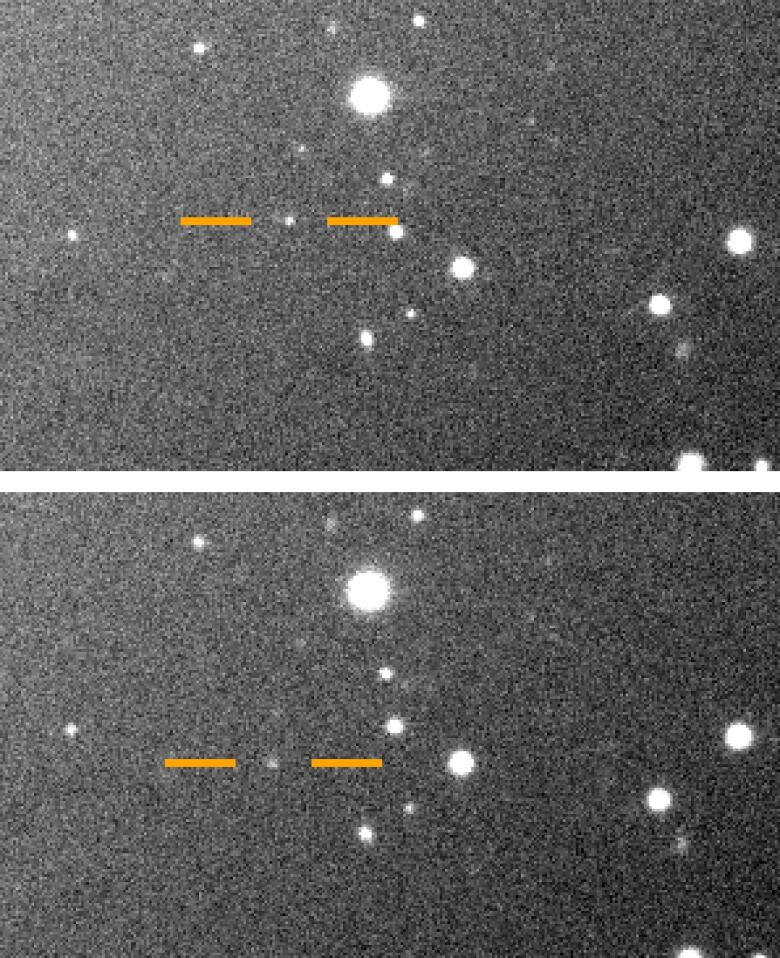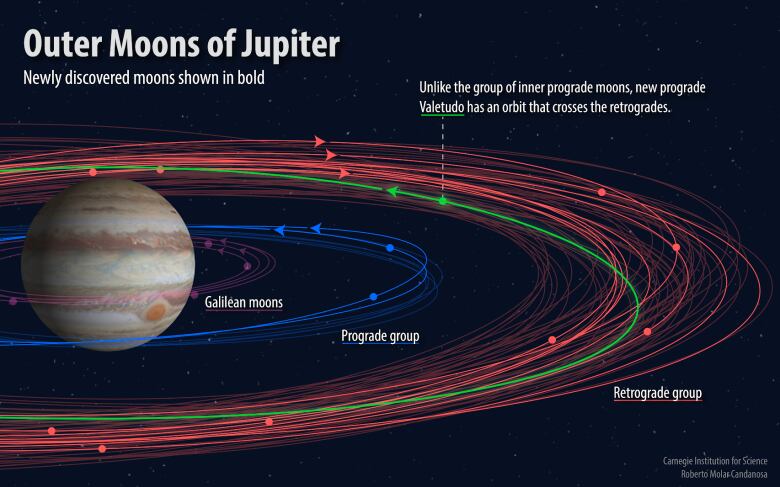12 new moons discovered around Jupiter
Brings Jovian moon count up to 79, the most in the solar system

A team of astronomers looking for a proposed planet past the orbit of Pluto got a surprise of their own when they discovered new moons around Jupiter. Twelve, to be exact.
The moons are small, ranging from just one kilometre to three kilometres in width. It now brings Jupiter's moon count up to 79, the most of any planet in our solar system.
"Finding 12 is pretty surprising," said Scott S. Sheppard, an astronomer from the Carnegie Institution for Science, who leda team of researchers in the discovery.
The researchers were searching for the proposed "Planet X" or "Planet 9," which astronomers believe exists and could account for the way distant objects orbit in a similar manner.
Using the Blanco four-metre telescope at Cerro Tololo Inter-American in Chile which had been recently fitted with a new and highly sensitive instrument called the "Dark Energy Camera," which isabout the size of a small car they detected objects that seemed to be moving against the background stars.
But that didn't necessarily suggestthey were moons they could have been asteroids orbiting the sun.So the researchershad to continue observations.

In May 2018, more than a year after the initial observations, they confirmed the objects were orbiting Jupiter, and not the sun. Several other telescopes also confirmed those observations.
The 'oddball'
Jupiter has several different types of moons. The Galilean moons Ganymede, Io, Callisto and Europa are the largest and can be seen from Earth using binoculars. There are also small interior moons that orbit in the same direction as Jupiter, which are referred to as prograde moons.
There are outer prograde moons, as well.
Finally, there are retrograde moons. These moons orbit Jupiter in the opposite direction.
The researchers confirmed two new moons amongthe inner prograde moons. Nine others were detected as part of the outer retrograde moons.But then there was one more, a moon the researchers term the "oddball" of the bunch.
This moon, currently called Valetudo, moves in a prograde motion, though it is slightly inclined compared to the orbits of the other moons. Because it is inclined, every so often it crosses the moons that arein retrograde.

"It's basically driving down the highway in the wrong direction," Sheppard said. "And that's very bad, because head-on collisions are likely to happen."
The good news is that a collision isn't likely to happen any time soon. Currently, the research team is running models to determine how long it will take to happen.
"Over a human lifetime, it doesn't happen. But over the age of the solar system, a hundred million or billions of years, it looks like it's very likely that Valetudo will collide with one of these retrograde objects," Sheppard said.
Interestingly, the astronomers believe that this is what happened in the past.
They theorize that Valetudo was a larger object, probably tens of kilometres in diameter. It moved in the prograde motion together with Jupiter and then collided with another object, causing the smaller retrograde-moving moons.
The findings are another piece of the puzzle of the formation of our solar system. Understanding that smaller moons still exist in the outer regions of Jupiter's orbital regions suggests to astronomers that they formedafter theplanets.
If they had formed earlier, the influence of gas and dust would have created drag and caused them to spiral inward to the planet, lost forever.
The survey looked for objects one kilometre and larger, so there is a chance that there are other, smaller "moonlets" in orbit around the giant Jupiter.
"The question is,are there more Valetudos, weird objects that have these differentorbits," Sheppard said. "That's unknown, but there are surely smaller fragments."












_(720p).jpg)


 OFFICIAL HD MUSIC VIDEO.jpg)
.jpg)



























































































